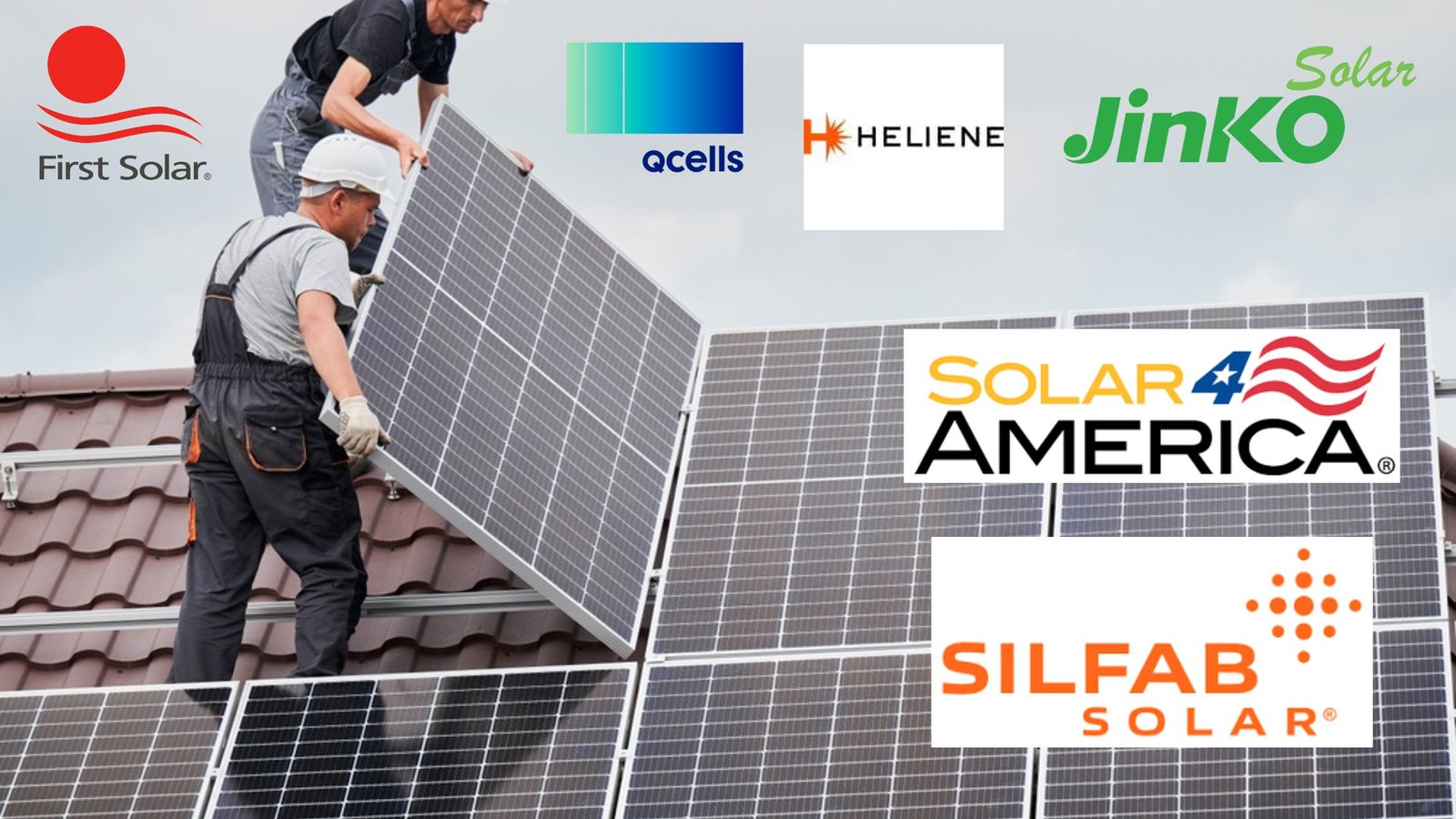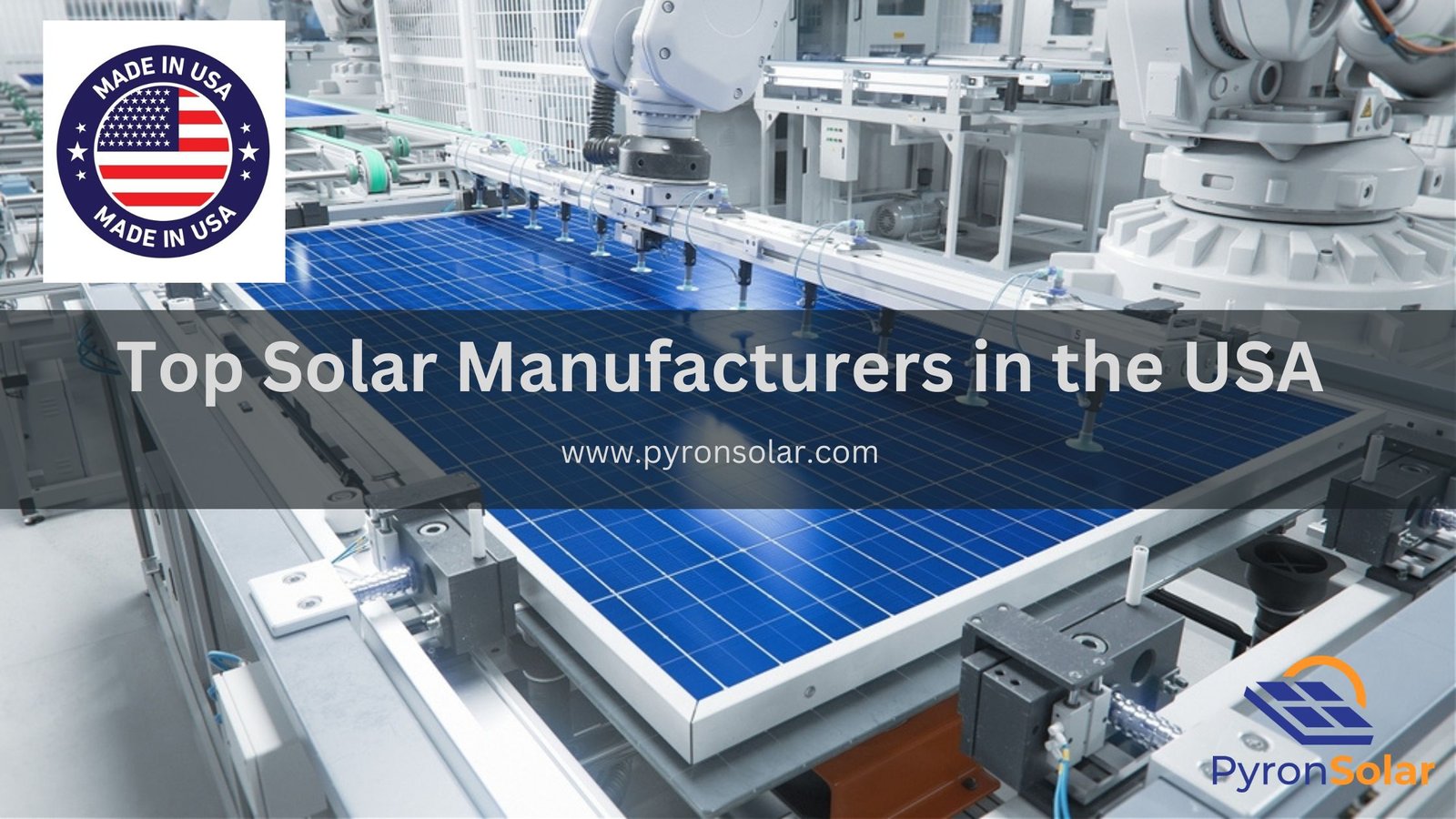American-made solar panels are gaining huge popularity since large-scale companies have increased the production scale of high-performance modules, their wide range of advantages motivates users to plan for residential, commercial and utility-scale installations at reasonable prices.
Policy incentives like the federal tax credit have played a crucial role in promoting solar energy as the taxpayers can claim a certain percentage of the total installation cost of a home solar system. Also, the U.S. government imposes tariffs on imported solar panels, protecting domestic manufacturers’ well-being and expanding with top manufacturers of the USA.
On the other hand, the domestic manufacturing capacity for solar panels in the USA has expanded with a list of top manufacturers such as First Solar, Qcells, Silfab Solar, Jinko Solar, and Mission Solar. As a result, the solar industry in America employed more than 263,883 workers, approximately based on the available data till 2022.
Before knowing how to buy solar panels, you need to understand its global landscape and compare it with U.S. manufacturing which will be discussed soon in detail…
List of America’s Top Solar Manufacturers

According to the U.S. Solar Photovoltaic manufacturing map data, 16 companies manufacture solar panels in the United States.
Here are the detailed profiles of the leading solar manufacturers in the U.S. tabulated below :
1. First Solar:
- Location: Ohio
- Established: 1999
- Production: More than 50% of panels are produced for commercial or industrial-scale installation
- Capacity: 6300 MW
- Future Endeavours: Promising investment in American manufacturing and jobs.
2. QCells:
- Location: Georgia
- Established: 2015
- Production: solar and storage development
- Capacity: 5,100 MW
- Future Endeavours: Possibility to expand domestic manufacturing capacity.
3. Solar4America:
- Location: Livermore, California
- Established: 1984
- Production: Solar panels for residential, commercial, and utility projects
- Capacity: 700 MW
- Future Endeavours: More investment in equipment and technologies.
4. Heliene:
- Location: Minnesota
- Established: 2018
- Production: Solar Panels
- Capacity: 600 MW
- Future Endeavours: Committed to producing high-quality and well-performing solar panels, and creating good jobs for North American employees.
5. Silfab Solar:
- Location: Washington
- Established: 2010
- Production: Highly efficient and premium quality solar panels
- Capacity: 400 MW
- Future Endeavours: Committed to reducing carbon emissions by up to 50% by 2030 and aiming for net zero by 2040.
6. Jinko Solar:
- Location: Florida
- Established: 2006
- Production: Solar PV modules and energy storage system developers
- Capacity: 400 MW
- Future Endeavours: Continues to operate across 160 countries globally.
Additionally, here is the complete list of other top solar module manufacturers in the USA along with their location and capacity tabulated below:
| Manufacturer | State | Annual Capacity |
| Auxin Solar | California | 150 MW |
| Crossroads Solar | Indiana | 50 MW |
| GAF Energy | California | 50 MW |
| Hightec Solar | Indiana | 100 MW |
| Merlin Solar | California | 5 MW |
| Mission Solar | Texas | 300 MW |
| Solaria | California | 40 MW |
Advantages of Solar Panels Made in America
Several benefits of choosing American-made solar panels include:
1. Better quality standards: Due to the higher quality control standards in the production facilities of American solar panels, the products are more reliable and durable. Also, the strict regulations and rigorous testing procedures, make American manufacturers prefer high-grade materials and follow advanced manufacturing processes, thereby offering a longer warranty period of 25–30 years. Also, you should know all important things about solar panel warranty.
2. Job creation and economic benefits: An increased number of skilled job opportunities enhances the economic rate by choosing the American panels that directly contribute to job growth across various sectors. It promotes education and training in the related fields. Compared to other sectors, the solar industry ranked the highest in job creation by providing 12,000 new jobs in 2022 and represented an annual growth of 3.7%. In December 2022, the solar industry employed more than 263,883 jobs in the United States.
3. Environmental benefits: American solar panels with shorter transportation routes than imported products result in various environmental benefits by minimizing carbon emissions. This is because domestically manufactured panels reduce the process and cost of delivery and installation. Besides all of this, there are a lot more environmental impacts of solar panels.
4. Support for domestic innovation: The U.S. government, academic institutions and private companies have come together to advance innovation in the solar industry by enhancing manufacturing and supporting the recycling process. In 2022, US President Biden-Harris, through his administration, announced $52 million for 19 specific projects including $10 million from the Bipartisan Infrastructure Law to enhance the domestic supply chain and $30 million in funding technologies for the solar energy-grid integration.
5. Cost Comparison: Despite American-made solar panels being more expensive ($2.40 to $3.60) than other internationally-made modules ($0.80 to $1.50 per watt), they are still worthy due to their long-term benefits such as quality, durability, and support for the domestic economy.
The Global Landscape of Solar Manufacturing
By the end of 2023, the global PV manufacturing capacity was between 650-750 GW and witnessed a tremendous growth of 2x to 3x in the past 5 years, of which 90% of the development occurred in China.
Currently, China dominates the supply chains of solar PV panels globally. Since 2011, China invested more than $50 billion in the latest PV production capacity, which is 10x times higher than Europe and has created more than 3,00,000 jobs across the solar PV manufacturing network.
Compared to other countries, China’s solar industry is profitable from large-scale economies and a strong domestic market. The Chinese manufacturers produce solar panels and components in large quantities to bring down production costs, and this strategic approach allows domestic companies to export solar panels globally at an affordable price.
At present, China surpasses 80% of the share in all the manufacturing stages of solar panels which includes polysilicon, ingots, wafers, cells, and modules. As a result, China’s share is double the global PV demand.
Here is the list of the top 5 solar manufacturers in the world, their location and their capacity shown below in a table:
| Ranking | Manufacturer | Location | Capacity (in GW) |
| 1. | Tongwei Solar | China | 38.1 |
| 2. | JA Solar | China | 36.2 |
| 3. | Aiko Solar | China | 30.7 |
| 4. | LONGi Solar | China | 29.2 |
| 5. | Jinko Solar | China | 23.9 |
All these leading 5 solar manufacturers from China enhance panel production and contribute to an increase in the economy of the solar industry globally.
Comparison with U.S. Manufacturing
In 2022, China dominated the global solar industry by producing 418 terawatt hours of solar power, whereas the United States ranked second in the list by producing 208.4 terawatt hours.
Ohio, the largest US solar manufacturer holds a huge share by producing more than 50% of panels than Q cells (2nd largest manufacturer in US) with 30%. In contrast, Chinese manufacturers like Tongwei Solar have a significantly larger global market share by manufacturing 75% of solar panels globally comprising 85% of cells, 97% of wafers and 79% of polysilicon.
The manufacturing capacity of American solar panels ranked at 9 gigawatts (GW) in 2022 and is expected to reach 60 gigawatts (GW) by 2026. According to the estimation of the U.S. Department of Energy (DOE), solar production could reach 10 GW in two years, 15 GW in three years and 25 GW in five years. The main intention is to achieve an annual production of up to 50 GW or more of high-performance panels for residential, commercial and utility-scale installations.
While competing on a global scale, American solar manufacturers face severe challenges which include panel costs due to high inflation, uncertainty in trade, costly polysilicon, and changes in state and national level policies. Furthermore, these challenges are made worse due to pandemic-related supply chain issues, and increased transportation and labour costs. However, the US solar industry aims for a better future despite these issues and plans to resolve them with a strong domestic energy supply.
How to Buy American-made Solar Panels?
You need to follow these tips to find out the installers that offer the best U.S.-made solar panel options:
- Inquire about several local installers asking for the best brand, its reputation, and where the manufacturing process takes place.
- Always shop for the best price as few solar installers work only with specific brands that may or may not be manufactured in the U.S.
- Consult with a solar power company in your locality and directly acquire more details.
Brand research plays a crucial role in assessing the quality and performance of the panels to check the efficiency and degradation rate as well as many other statistics. Also, few brands consistently produce high-quality panels, whereas the remaining others produce average-quality modules with an affordable price range.
At the same time, you need to consider these potential challenges when searching for American-made panels:
Finding solar panels built in the U.S. can be extremely complicated due to the lack of assembled local products and improper importing resources that result in a mix of US-based and international-level manufacturing modules.
It is more expensive than international panels due to the long-term advantages.
Ray is an avid reader and writer with over 25 years of experience serving various domestic and multinational private and public energy companies in the USA.

